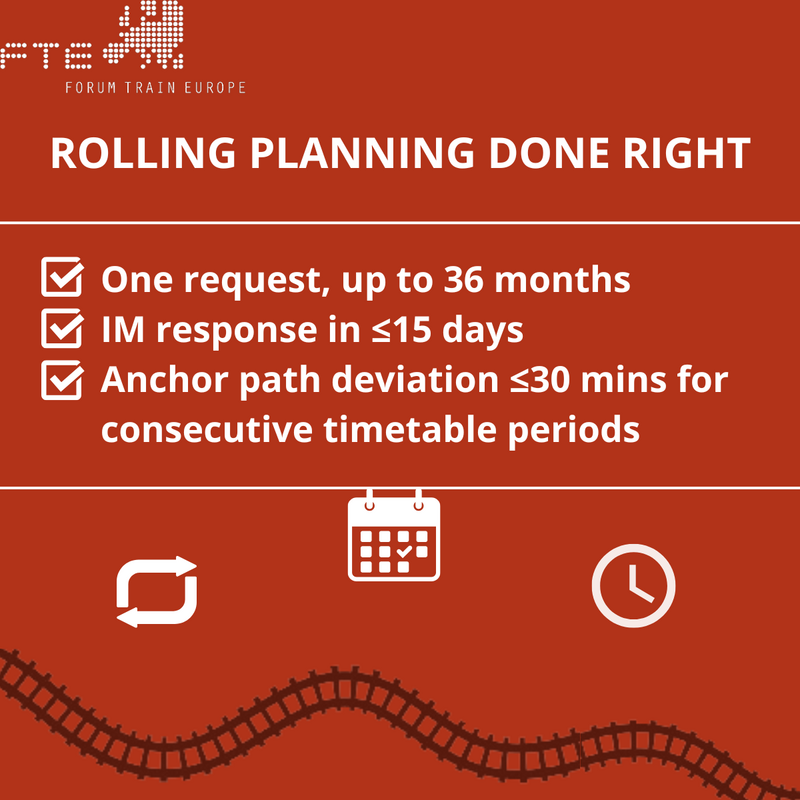When it comes to today’s existing rail capacity products, three major problems exist for freight railway undertakings (RUs). Firstly, there is no opportunity to order a capacity of high-quality in the short term. This contradicts the customers, who demand a high level of flexibility as they experience in the competing road transport. Secondly, there is no practical possibility to secure multi‑annual capacity, despite the RUs and their customers would expect reliability and cost predictability over the whole contract/case life-cycle, and not limited to a single artificial rail annual timetable. Thirdly, RUs must find a bureaucratic way over the patchwork of national processes and incompatible IT systems, particularly for cross-border traffic, and coordinate from origin to destination. It is far away from customer-orientated one request in one system with one allocation.
Since 2014, members of FTE and RNE have developed the Timetable Redesign (TTR) approach to replace the outdated “one process fits all” model. A new product was born, “rolling planning”, which should have overcome the rigid annual planning cycle, by introducing of more responsive process to get capacity of high-quality only 1 to 4 months before the first departure, and irrespectively of artificial annual timetable mentality. This vision inspired the European Commission, in the proposed EU Regulation on the Use of Railway Infrastructure, which introduces a legal background for rolling planning.
The FTE members consider the “rolling planning” as the fundamental element of the Regulation. Rolling planning has great potential to bring innovation, reliability, and flexibility to rail freight, and this potential must not be wasted or hindered by missing customer-oriented provisions and or diverging implementation. Therefore, the FTE community listed down the key requirements, which we believe balance between market acceptable solution and realistic expectations.
Find the complete document here.
